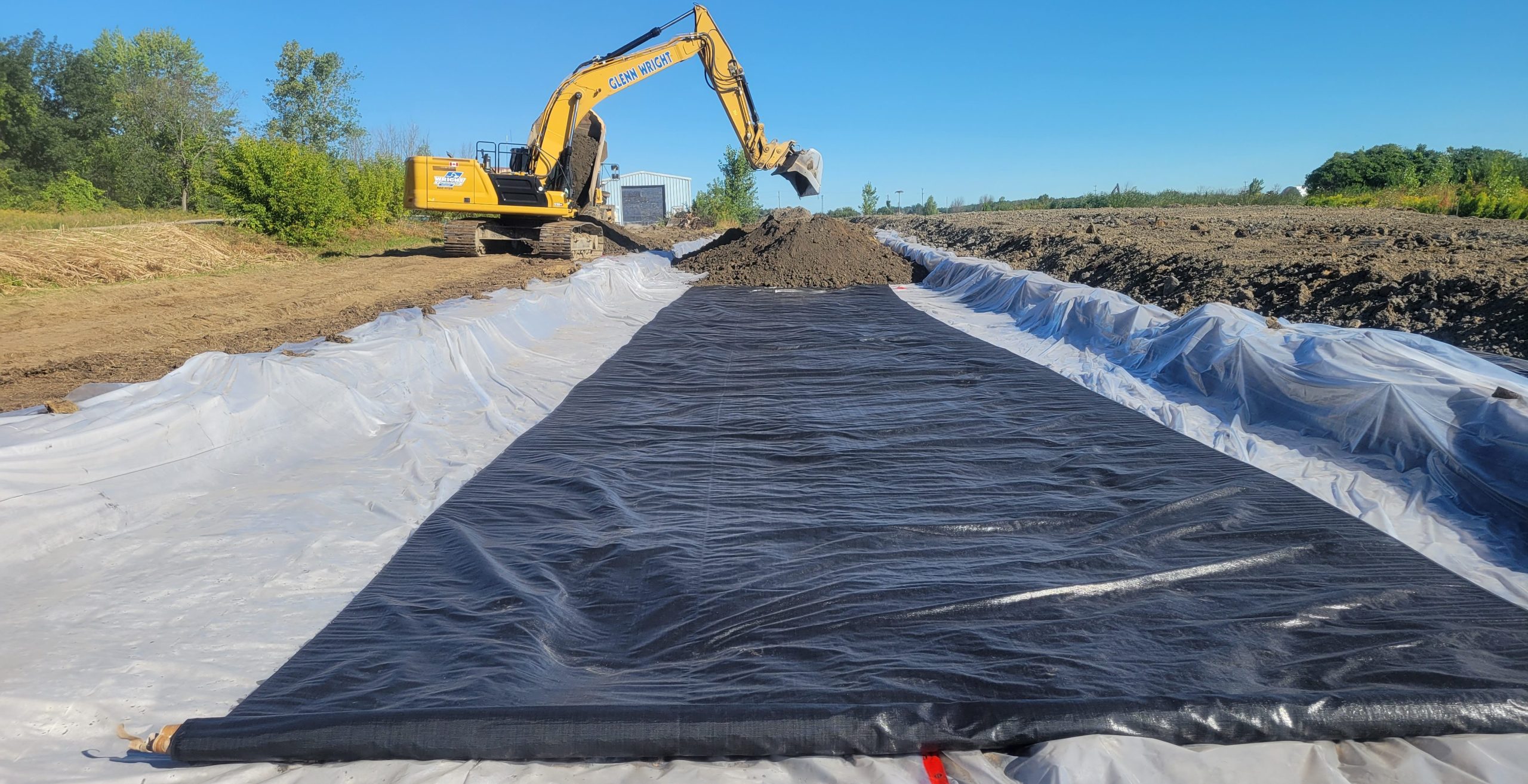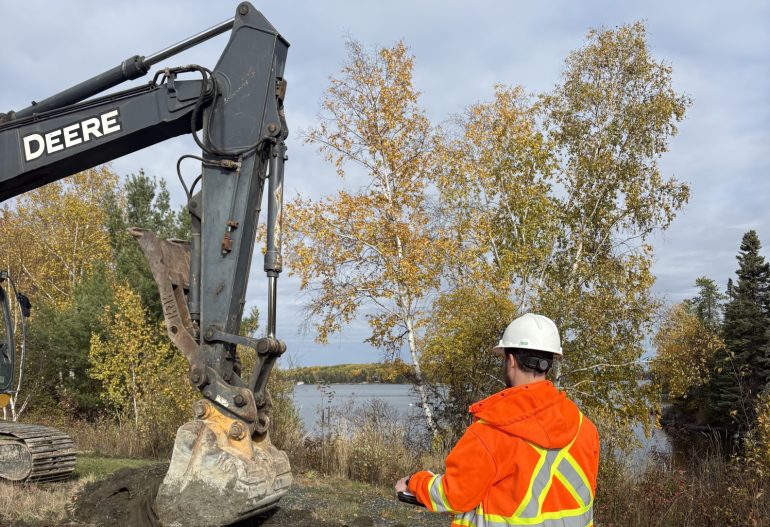Soil remediation begins by understanding the sources and types of contamination. AEL’s team of scientists and engineers will start with a review of available information and will typically ask if any available environmental reports are available for the property. If additional information is required, a site investigation designed specifically to provide the information necessary to support remedial design will be proposed.
Where impacts are present in soil, the potential also exists for groundwater contamination. A Phase Two Environmental Site Assessment (ESA) will typically test both soil and groundwater to determine if contamination exists in either or both soil and groundwater.
Once soil contamination is adequately characterized, AEL’s team of engineers and scientists collaborate to design a Remedial Action Plan (RAP) for the site. A RAP may vary depending on your needs and can be a short, high level cost estimate, or an in-depth review and assessment of all potentially applicable remediation strategies to help achieve site-specific standards.

Methods of soil remediation that are practiced by AEL include:
- Excavation and Disposal: This traditional remedial method, (sometimes referred to as “dig & dump” soil remediation) involves delineating the impacted area, removing contaminated soil from a site, and bringing it to a licensed landfill or approved re-use site for proper disposal, including excess soil testing per Ontario’s soil management regulations (O. Reg. 406/19).
In some cases, excavation and disposal is the most viable option to satisfy short timelines, or if the soil is non-hazardous and not easily treated using alternative methods. However, in other cases, significant cost can be saved using alternative soil treatment methods - Bioremediation: uses microorganisms such as bacteria to metabolize and thereby break down contaminants, and is typically completed in-situ.
- Chemical Remediation: typically uses oxidation or reduction reaction to destroy or chemically transform contamination into non-hazardous end products.
- Non-Destructive Mass Transfer: involves enhanced removal of contaminants from the soil, and includes technologies such as soil washing, vapour extraction, and more.
- Thermal Remediation: uses heat to either destroy, immobilize or enhance mass transfer of contaminants.
- Containment/Immobilization: a physical barrier is put in place to limit the area of contamination and prevent its spread.
An Innovative Approach to Soil Remediation
AEL believes that remediation of impacted soil doesn’t have to be a guessing game.
While traditional soil remediation techniques have long served the industry, they typically made assumptions regarding the boundaries of soil contamination based on borehole-to-borehole calculations, resulting in larger excavations than necessary, added time and costs.
AEL reduces overall remediation project costs by using precise on-site screening to precisely delineate the boundaries of soil contamination from the outset, reducing the overall area requiring remediation.
Our innovative approach combines field-proven methodology with portable, high-tech laboratory equipment, all operated by AEL’s experienced team of field scientists and engineers. The result is a more informed, data-driven remediation strategy—delivered with confidence.

What is On-Site Testing?
AEL’s on-site testing uses specialized equipment for real-time soil analysis of several major classes of soil contamination. These classes include:
- Petroleum hydrocarbons (PHCs) and polycyclic aromatic hydrocarbons (PAHs), which are tested using an ultraviolet fluorescence detector (UVF),
- Metals such as lead, arsenic, cadmium, etc. using X-Ray Fluorescence (XRF)
- Volatile organic compounds (VOCs) using a portable Gas Chromatographer/Mass Spectrometer (GC/MS)
These specialized on-site testing tools allow the AEL team to rapidly define which areas of soil at the site are contaminated and which meet guidelines, without needing to wait for confirmation sample results from the laboratory, which can otherwise take days to receive. This empowers more accurate decision making in real time while soils are being remediated, thereby reducing the timeline to closure and minimizing costs.

Why Choose AEL?
AEL’s multidisciplinary team of environmental engineers, hydrogeologists, and scientists brings extensive experience in the design and implementation of soil remediation programs. Our work is led and overseen by Qualified Persons (QPs) as defined under Ontario Regulation 153/04, providing years of experience and technical excellence, as well as the oversight required for regulatory compliance. We collaborate closely with clients to understand and prioritize project goals and deliver site-specific remediation strategies tailored to your needs.
Ready to take the next step towards remediating your property? We invite you to discuss your site-specific goals and situation with our team of experts.
Want to Learn More About Innovative Soil Remediation Techniques?
25 Years of Innovation in Environmental Site Remediation

Dig deeper into some of the most important innovations in the field of environmental remediation.
Case Study: Ex-Situ Bioremediation of a Hydrocarbon Contaminated Site
Watch our insightful webinar showcasing one of AEL’s soil remediation projects using innovative ex-situ bioremediation of a hydrocarbon contaminated site.
Our Process
-

1. Discover
Every property is unique. We will listen carefully and seek clarity to ensure we understand your site’s unique details and goals.
-

2. Identify
We will recommend an optimal approach, innovative and cost-effective services and solutions for your site, focused on achieving your desired outcome.
-

3. Analyze
Once authorized, we will complete the required research, testing, consulting or reports to required standards. We take the time to review any results and reports together.

Every Property Has a History, We Can Help You Interpret the Past to Prepare for the Future
AEL environment is focused on creating tailored solutions based on your end goals for each property. Let’s talk, and our team will guide you through the process.
